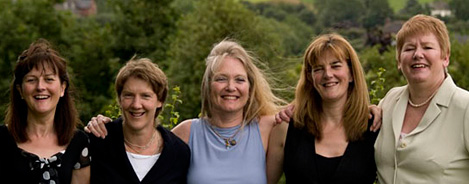Louise Trevatt - Additional Background Information
Louise Trevatt
Additional Background Information
If you want to know more, here's some additional background information!
In my early professional life, I was very interested in people and what makes them tick. I was keen to develop skills and knowledge of personal development techniques and researched and used models developed by people such as:
- Kurt Lewin
- Peter Burgoyne
- Vroom
- Honey and Mumford
- Kolb
- Adair
- French and Raven
- Etc etc
My aim was to always have an effective way of supporting people to achieve whatever goals they had set for themselves. So, I was mainly interested in gathering up useful processes and tools that would enable people to understand more about themselves and the people they were responsible for.
As my search continued I became aware of NLP (Neuro Linguistic Programming).
I researched the following people, their work, techniques and underlying philosophy. I have had the great privilege of having trained with most of them:
- Dr Richard Bandler
- John Grinder
- John Seymour
- Joseph O’Connor
- Anthony Robbins
- Paul McKenna
- Stephen Covey
My aim is to develop techniques that allow individuals to understand themselves better, gain perspective and develop their own strategies to change their lives for the better.
I trained as an NLP Trainer and Practitioner.
So I hear you ask yourself, what does that mean?
NLP is a great technology. As human beings we all have things that we are naturally interested in and tend to do very well.
NLP is about taking this tendency to do things well, understanding what it means and how it manifests itself in the way that a person feels and behaves.
For example - Judith has a great ability to keep calm when everyone around is panicking. This is how she does it:
- Whenever she hears a certain tone of urgency in someone’s voice she immediately sees the colour blue
- This colour blue becomes a calm peaceful shoreline on a warm and sunny day in her mind's eye
-
Judith then says to herself “There are obstacles here and as I travel the length of this beach I will come across them”
- There will be places I need to take my shoes off to paddle
- There will be places I need to put my shoes on to walk over rocky ground
- Whatever happens I have what it takes to successfully walk the length of this beach
- So Judith remains calm because she is processing things internally and affirming herself. She is recognising that there is a job to do, that there will be things that get in the way, and that she has choices about how to deal with them. This belief allows her to stay calm and deal with whatever is presented.
Judith wasn’t aware that this is what she did. She had a sense of the colour and a sense of the freedom associated with a beach, but she didn’t know more than that until we worked with her to slow things down so we could take a good look at what was going on in her minds eye.
So, there are things that we all do really well.
Just for a moment, think about 5 people you know, and identify something that each one of them does really well such as:
- They get out of bed really easily
- They are tidy
- They manage their finances well
- They exercise regularly and enjoy it
- They choose clothes that really suit them
- They navigate the politics of work really well
- They manage meetings effectively
- They always know what’s going on
Imagine if we found out how they did it and learned it. In a very short space of time we would be doing lots more things really well and dealing with them differently – our experiences of problems and challenges would change for the better.
Simple techniques make a massive difference to our lives!
Richard Bandler believes that personal change techniques should be accessible to everyone and strives to constantly develop simple easily accessible techniques.
Paul Mckenna is a great ambassador for NLP and he constantly brings new approaches to the public. He combines hypnosis, NLP and a multitude of varied techniques such as Thought Field Therapy.
His recent TV appearances give a very good example of how deeper research and science can be presented in easy to use tools and techniques that lead to positive outcomes.
OK, So Where Can I Use These Tools?
This is a good question! I have found that my skills in change techniques are directly applicable to the working environment. I have applied them in my various roles:
- Supporting people to develop their business
- Working with people to grow their business
- Bringing about personal changes
- Developing the workforce
- As a manager
- As a business adviser
- As an HR manager (Management Development)
- As a university lecturer
My professional practise involves using a combination of:
- Language skills
- NLP
- Variety of practitioner models and techniques
- The journey
- Sedona Method
- The work of Shelley Rose Charvey
- The work of Shakti Gawain
- The work of Deepak Chopra
- Thought Field Therapy
- David Grove
- And…… many successful management tools and techniques as appropriate
My personal belief is that we could all do with a 'skilled friend' every now and then, someone you can put your trust in and someone that will put your interests as their priority.

























